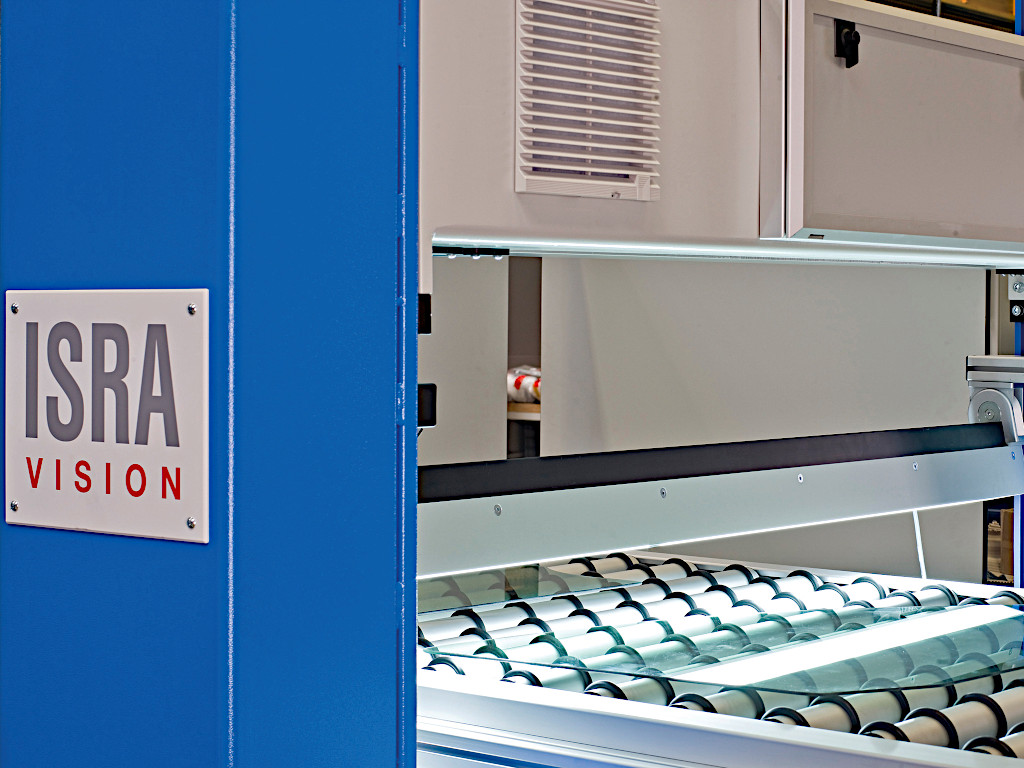Today, machine vision systems are an essential asset on many processing lines. Investment has soared, and many new applications have been developed in the glass industry. The driving factors for these investments are increasing quality, customer satisfaction, and production yield by sorting out defects in real time.
Yet, given all these driving factors, what is the right inspection set-up? Inspection systems remain complex technologies and some critical decision factors are not always well understood – especially the classification performance and its impact on the return of investment during operation.
Let’s take a look at possible inspection set-ups to better understand the challenges of automating quality inspection of glass plates.
Inspection set-up options
In comparison to an automatic inspection system, a manual inspection has lower repeatability for key performance indicators. This is due to the human factors: given that each operator can interpret defects differently, manual inspection is less consistent over time. Therefore, an automatic inspection system is usually considered to be superior. However, not all automatic inspection systems perform on the same level. A ‘basic’ inspection system consists of machine vision technologies with a limited number of optical channels or low-quality sensors and the ability to process a limited number of defect features. The detection and sizing precision can vary depending on the solution, but ultimately such a solution provides a low type of performance classification/evaluation.
On the other hand, a ‘high-end’ inspection system is developed for a specified application, uses custom-built image processing FPGAs [Field Programmable Gate Array], integrates high-quality data acquisition, and offers a more comprehensive defect analysis with superior classification performance.
Challenges
In practical terms, classification can have a strong influence on the performance of the overall system. False identification – derived from a high number of ‘events’ perceived during the inspection process, and not all of them considered to be a real defect – can lead to potential overkill and/or missed defects. The severity of the defects detected also needs to be correctly determined. Finally, complex grading rules need to be developed to make the final decision on whether a glass plate should be rejected or dispatched to customers with different quality levels. Machine inspection systems typically integrate software tools to determine quality zones, analyse clusters and more to decide if the plate fulfils the given quality requirement.
P2 inspection system
ISRA VISION’s P2 coating inline inspection system provides complete inspection of coating quality on glass plates, and detects and classifies all typical coating and arcing defects.
The P2 inspection systems integrate ISRA’s multi-view technology to evaluate each defect in different illumination conditions. This enables the fusion of multiple channels – such as the advanced cross-dark field technology, for example – into one system. During defect analysis over 100 characteristics (features or calculated features) per channel are extracted. Each feature can correspond to a distinguishing analysis of the defect, such as its shape, its axis, the ratio between its length and width, and also contrast characteristics including its homogeneity, sharpness and specific patterns. This represents five to 20 times more characteristics compared to a ‘basic’ inspection system and increases the classification capability of ISRA systems.
Benefits of deep learning
Naturally, this quantity of defect information requires advanced classifier technologies. Classifying using a simple trigger is not an option anymore because advanced classifiers have to compare hundreds of image features of different defects to find similarities and define rules for distinction. Advanced standardised systems already offer optimised and performant classifiers based on experience. In contrast, AI-based classifiers offer an alternative but require additional training data. In a machine learning approach (feature-based classification), the system is continuously trained according to its own needs, primarily via an evaluation branch or the next similar defect – i.e., the classification is generated via features such as geometry, statistics, or frequency.
Deep Learning (image-based classification) forgoes feature extraction – it is the task of the neural network to learn this. Instead, it works directly on representative image data with convolutional layers – so-called filters. The system learns the features and classifies with high precision if a sufficiently large and qualitatively good image data set is the basis.
Classification performance is paramount. Thus, ISRA has recently introduced the fifth generation (deep learning) of classifier technology into its advanced classifier tools to increase the performance for the most critical tasks.
Image: ISRA’s P2 (PowerPlate) product line provides a high degree of inspection reliability for glass.


